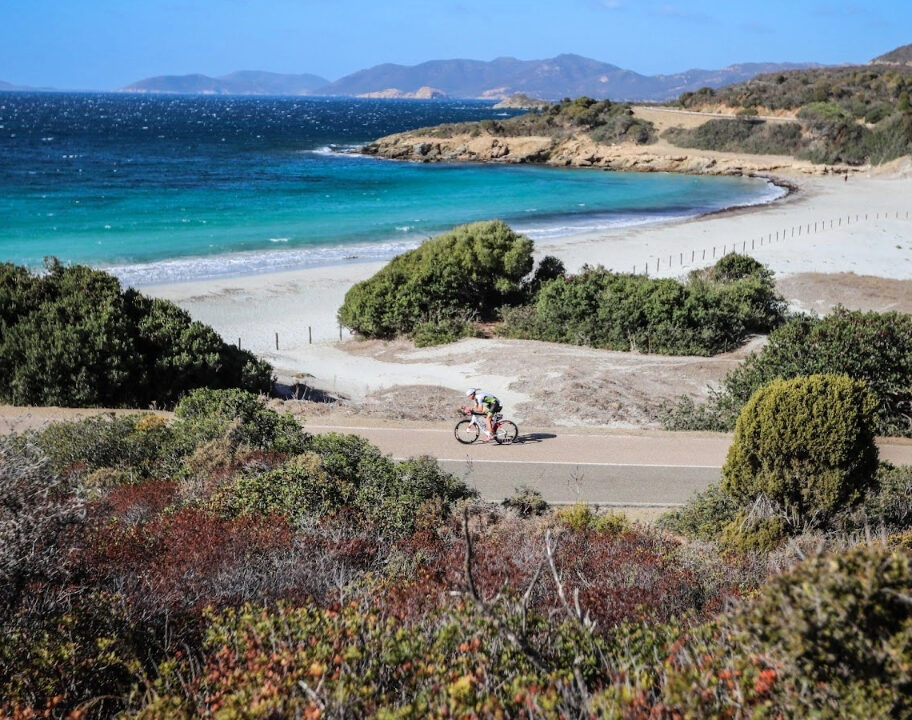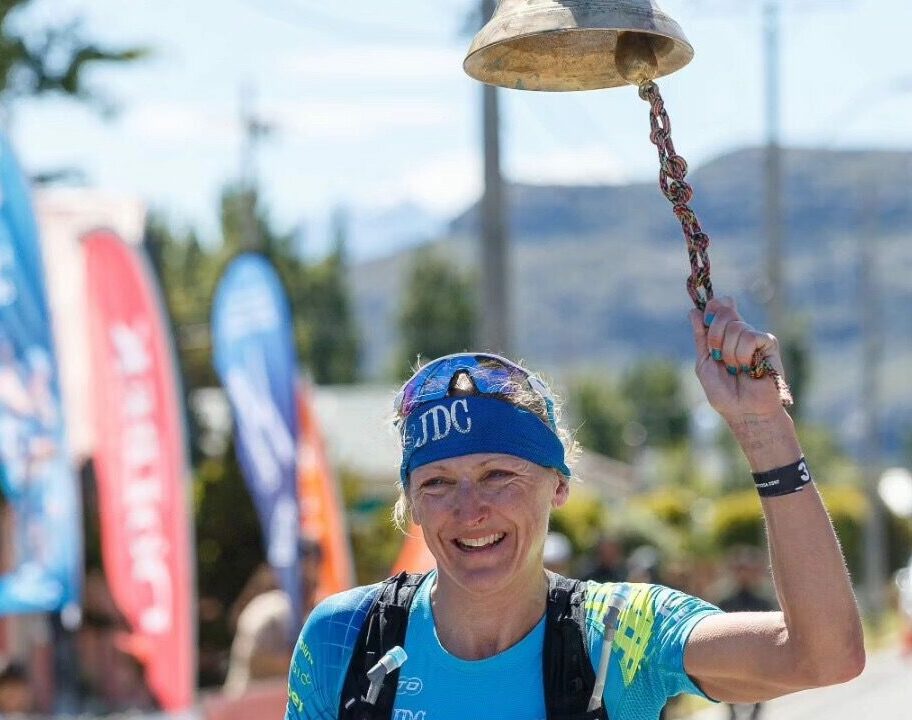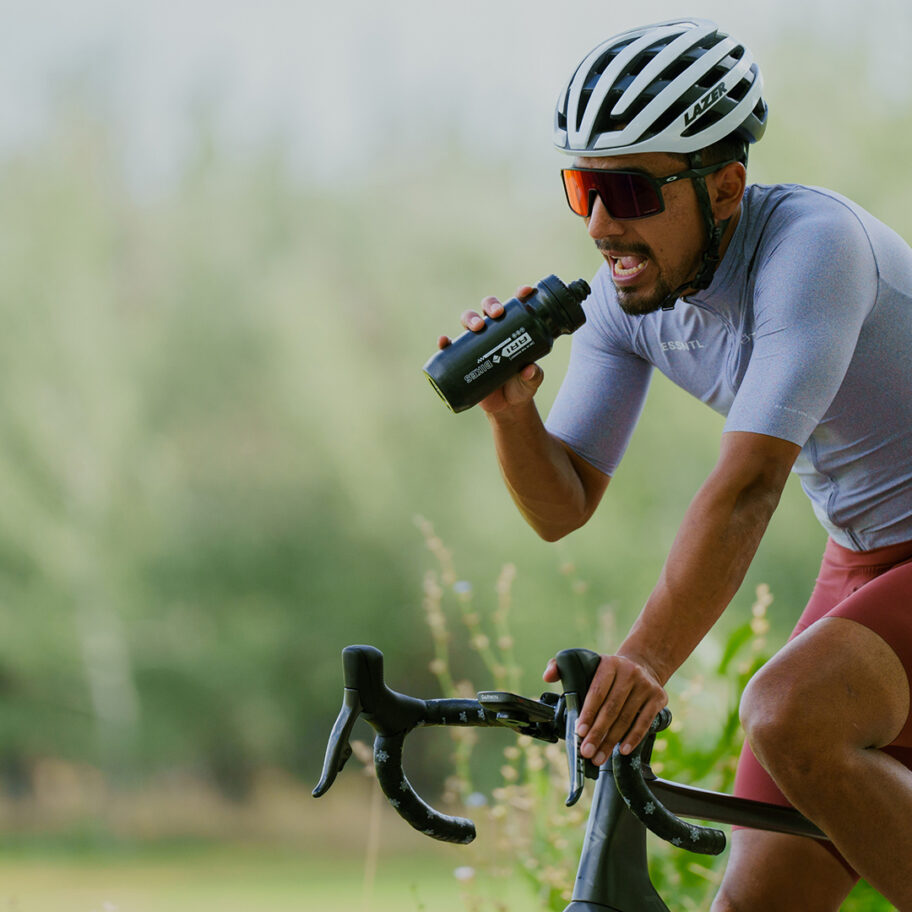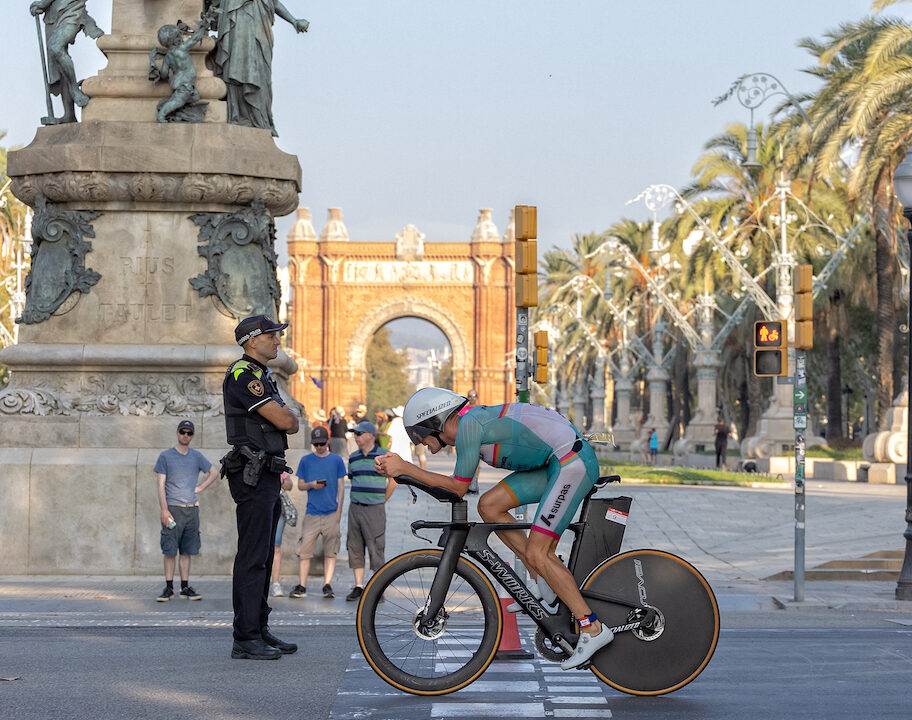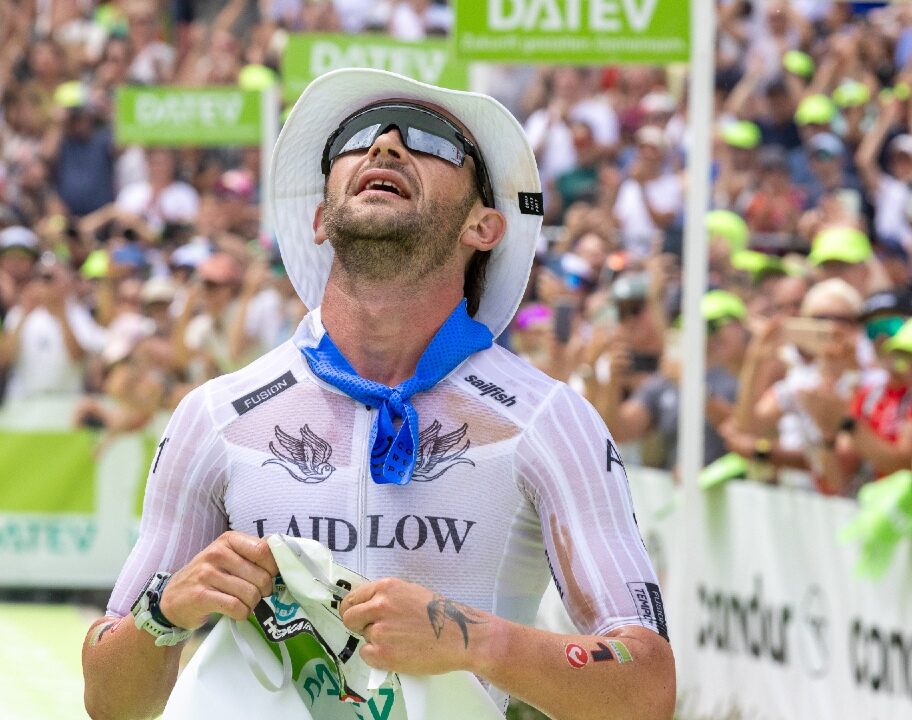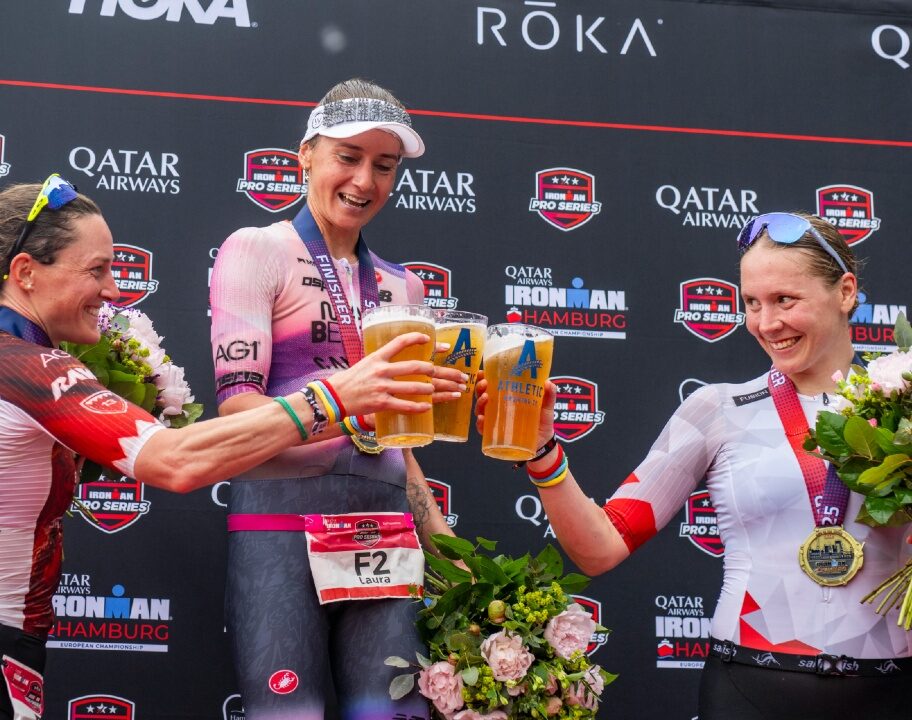Whether it’s Kristian Blummenfelt’s spectacular gastric fireworks at the 2024 IRONMAN World Championship Kona. Or Taylor Knibb’s mishap at the T100 Grand Final in Dubai. Even the world’s best professionals can fall victim to race-ruining gut trouble. GI issues during training and racing are incredibly common in endurance sport – especially in triathlon once you get up to the longer distances.
But watching your PB attempt quite literally get flushed down the toilet doesn’t have to be something you just accept as part of the sport. We spoke to Lauren Walker (ANutr) from Total Endurance Nutrition to get her take on why GI issues are so common among endurance athletes – and what you can do in training and on race day to avoid them. Ready to trade the porta potties for the podium? Keep reading!
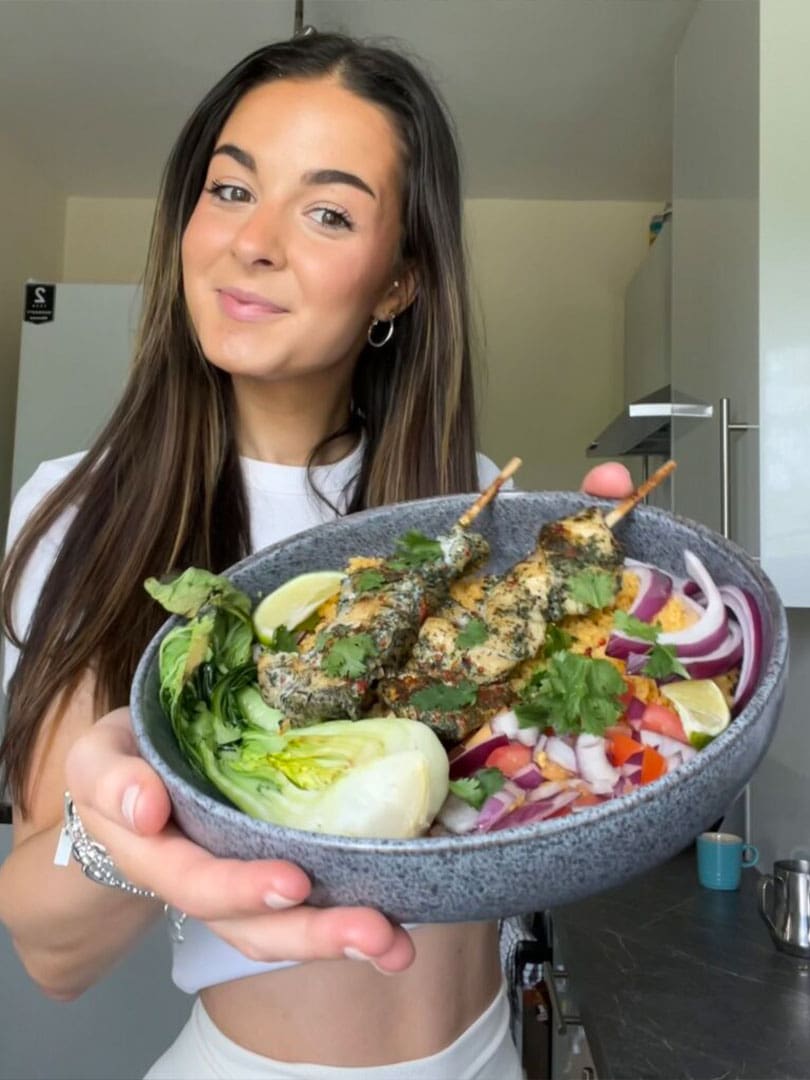
Why are GI issues so common for endurance athletes?
We’ve all experienced it at one time or another. You feel absolutely fine, and then you start running or you drop down into your TT position on the bike and out of nowhere you’re hit with stomach pain, bloating, nausea or… worse. So why is it that exercising can trigger gut issues?
“Prolonged exercise, especially during endurance events like triathlons, can lead to gastrointestinal distress for several reasons,” Lauren explains. “During intense exercise, the body prioritises blood flow to the muscles, reducing circulation to the gut, which can cause digestive issues.”
“Additionally, increased stress hormones like cortisol and the repetitive jostling from running or the aero position in cycling can disrupt the intestines, worsening bloating or discomfort.”
Certain foods can increase your risk of GI distress
So exercise itself can play a role in contributing to gut issues. But not every athlete who laces up a pair of running shoes or toes a start line is going to have tummy troubles. So there are other factors at play here. One of those factors, Lauren explains, can be your nutritional choices.
“High-fibre foods such as beans, broccoli and whole grains can be difficult to digest quickly, causing bloating and gas,” says Lauren. “Fatty foods and greasy meals also slow down gastric emptying, which can cause discomfort and nausea during exercise.”
“And for some individuals, the lactose in dairy can also be a contributing factor to GI distress when consumed in larger amounts before exercise.”
If you’re regularly experiencing stomach trouble in training and racing, it’s worth looking at your diet and identifying if any of these common culprits are regular features. It’s not necessarily about cutting things out. Fibre intake, for example, is something that most of us need more of – not less. But it’s about timing and quantities. You can always reach out to the team at Total Endurance Nutrition for help if you’re not sure where to start to get your day to day nutrition dialled!
Too much, too unfamiliar or too close to your start time: common mistakes that can increase your likelihood of GI issues
If you’ve got a big session on the training plan, or a race coming up. It can be easy to fall into the trap of thinking you need to seriously load up on fuel. And at races, free samples and a multitude of food carts at expos can make it tempting to go off-piste with your food choices. But this can increase your likelihood of disruptive stomach issues – right when it matters.
“One of the most common mistakes we see athletes making in the days leading up to a race or a big training session is overeating, or trying new foods they haven’t tested in training! This can really disrupt digestion, and increase the risk of GI issues.”
“Another mistake is eating too close to a training session, which doesn’t give the body enough time to properly digest and absorb nutrients. And of course, hydration is key. Failing to hydrate properly can also contribute to stomach discomfort, and affect performance.”
What NOT to do on race day if you want to avoid stomach issues
So before a race or a big training session, it’s all about considering what you’re eating and when. But what about during a race? Often we think we’re doing everything right, which makes it all the more frustrating when GI issues strike. But in reality there are some common things we can tend to get wrong which might be having more of an impact than we appreciate.
“During a race, many athletes unknowingly make the mistake of either over- or under-hydrating. Over-hydrating can lead to bloating or a sloshing feeling in the stomach. Meanwhile, under-hydrating can cause dehydration, cramping or fatigue.”
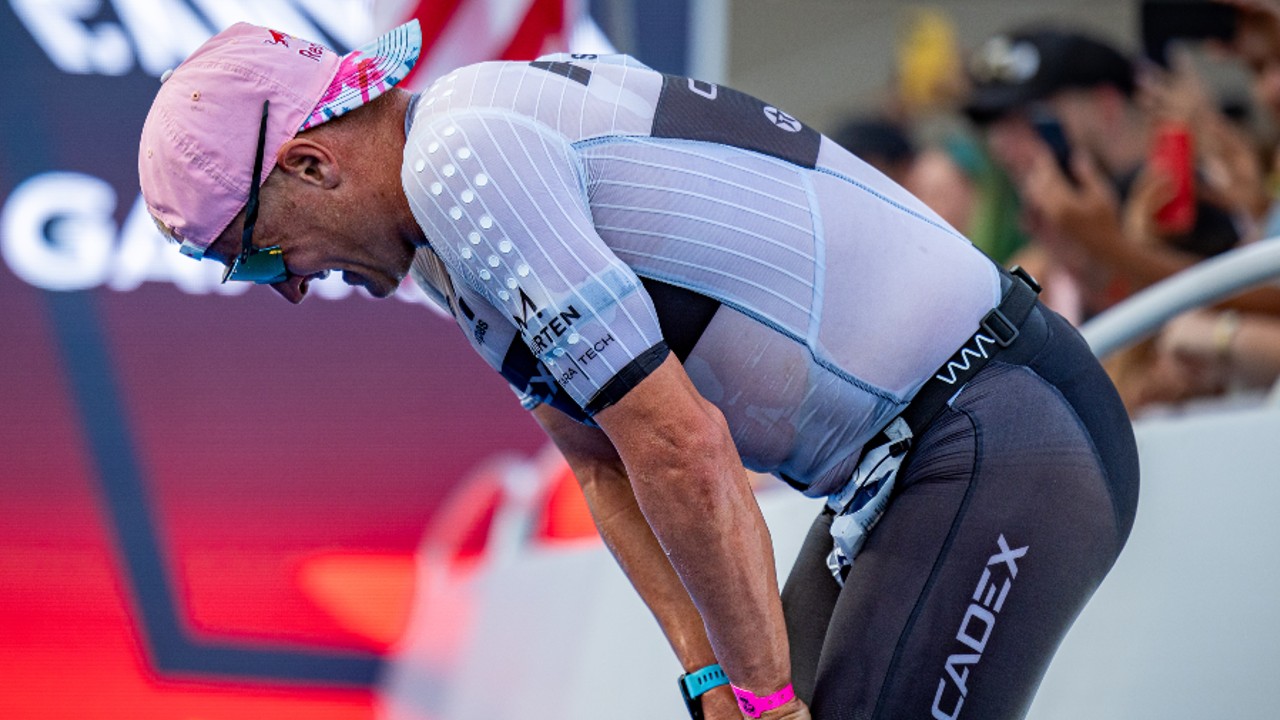
“Another common fuelling issue is improper timing. Particularly on the bike, athletes sometimes wait too long to fuel or they try to consume too much at once. This can lead to bloating or stomach cramps.”
“Switching the type of nutrition you’re taking mid-race can also cause issues, as it can disrupt the digestive system if your body isn’t used to it.”
How to avoid GI issues – what to do in training and on race day to keep your stomach happy
It’s useful to know some of the common GI distress culprits and the mistakes to avoid. But what can we do during training and on race day to give ourselves the best shot of avoiding dreaded stomach issues? From things you can do in training, to choosing the best sports nutrition and managing your pre-race carb load. Lauren shared some practical tips to help you get to your next finish line, without any unplanned gastric fireworks.
Gut training – what is it and how does it work?
First up is training your gut to get it used to taking on fuel during exercise. Much like training your legs and your lungs to hold a certain power on the bike or pace on the run, practice makes perfect when it comes to getting your stomach to perform as required come race day!
“‘Gut training’ is all about getting your digestive system used to the food and fluids you’ll rely on during a race,” Lauren explains. “By practicing your nutrition during training, your gut becomes more efficient at processing fuel. This can help to reduce discomfort on race day.”
“It’s similar to how your muscles adapt to training and get stronger. Over time, your digestive system can also adapt to handle the demands of long duration exercise.”
“The key is to start using your race day nutrition during your longer training sessions, across the swim, bike and run. Gradually increase the intensity and duration of the sessions to help your gut adjust to the stress and improve its ability to absorb carbs and fluids efficiently.”
Fuelling dos and don’ts
Alongside practicing your race nutrition to get your gut familiar with it, it’s also important to establish some gut-friendly habits. So we asked Lauren to give us her fuelling dos and don’ts:
- Practice your nutrition plan during training
- Fuel with easily digestible carbs ~2-3hrs before a session
- Give your body enough time to digest your pre-session fuel
- Hydrate well
- Eat high fat or high fibre foods, or a heavy meal, right before a training session or before a race – they can slow digestion.
- Overdo the hydration so you end up bloated
- Experiment with new food or nutrition products just before a big session or a race – unless you want to risk unwanted surprises!
How to find the optimal sports nutrition products
Finding sports nutrition, whether it’s bars, gels or energy drinks, that work for you can be a bit of a trial and error process. But if you’ve tried multiple brands and you’re still searching for your holy grail – it might be worth checking the ingredients list. Because while sports nutrition products are obviously going to be designed with a consistency/texture that’s easy to consume on the go. For people with sensitive stomachs, there can be some common ingredients that may be contributing to your tummy troubles.
“There are some ingredients in sports nutrition that can trigger GI issues, especially for sensitive athletes. One of the main culprits is fructose, a type of sugar found in many gels and energy drinks. When consumed in large amounts or without enough glucose to balance it. Fructose can cause bloating, cramping, and diarrhoea. However, when used correctly, fructose can improve performance without causing stomach issues.” If there have been certain sports nutrition products that really haven’t agreed with you, it’s worth taking a look to see if they were particularly high in fructose compared to glucose.
“Another common culprit for GI issues when using sports nutrition is artificial sweeteners such as sorbitol. These are used to make products taste sweet, without adding sugar. But they can cause digestive upset in some people. Practicing your nutrition strategy can help you to identify this.”
“In terms of carb types, alongside high fructose if it is consumed too quickly or in large amounts., ‘Rreal food’ carb sources can also be tricky for some people.”
Look for a balanced carb mix and give yourself time to test multiple options in training
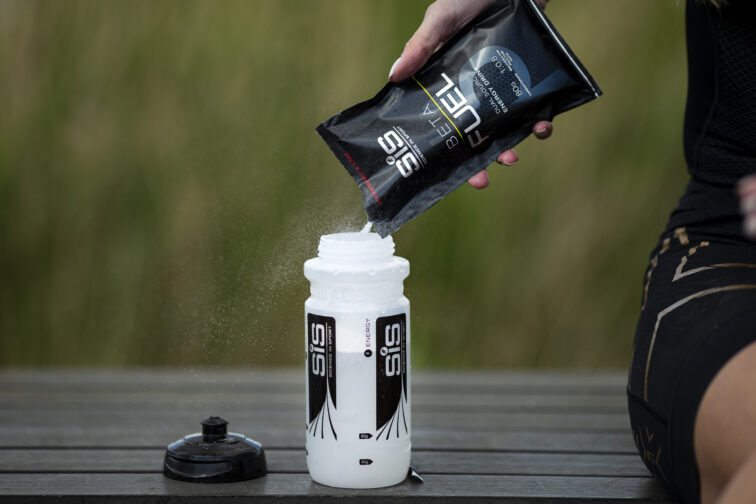
“When trying new products, I recommend looking for those with a balanced carb mix (glucose and fructose) and avoiding anything with artificial sweeteners (if sensitive) or high fibre.”
“For longer sessions (over 90 minutes), products with a 2:1 glucose-to-fructose or 1:08 ratio are typically recommended. However, individual tolerance may vary, so it’s essential to test different combinations during training to find what works best for your body.”
Don’t let your carb load be the last hurdle you fall at
You’ve ticked off every training session. You’ve planned out your race morning schedule meticulously. Every bit of kit you’ll need and every energy gel you’ll take during the race is carefully accounted for. But you’ve not really thought about your carb load, and now it’s 8pm the night before your race and you’re frantically shovelling down your third bowl of pasta. Sound familiar? Carb-loading might sound like something you can just ‘wing’ – but if you want to do everything you can to avoid GI issues, it’s important to plan yours carefully.
“A common mistake individuals often make during pre-race carb loading is waiting until the night before the race to load up on carbs. This can lead to a last-minute overload of food that the body doesn’t have enough time to digest properly, potentially causing bloating or discomfort.”
“For triathlons, it’s important to start carb loading 1-2 days before the event, focusing on easily digestible carbs like pasta, rice, and bread. The goal is to gradually increase carb intake while reducing fibre and fat to avoid any digestive issues. By spreading out the carb loading over a few days, triathletes can maximise glycogen stores without overwhelming the system on race morning.”
Race day tips to keep stomach issues at bay – and what to do if GI issues strike
“On race morning, I recommend eating a light, easily digestible breakfast 3-4 hours before the race. Something carb-heavy with a small amount of protein, like porridge with a banana or a bagel with peanut butter/ jam. Make sure you have also practiced your pre-race breakfast in training!”
“During the race, stick to the nutrition plan you’ve practiced during training. Use products that your body is accustomed to and consume them at regular intervals. Aim to hydrate regularly, but take small sips rather than chugging large amounts of fluid at once. This helps prevent any sloshing or stomach discomfort.”
“If stomach issues do strike, slow down your fuelling, take smaller sips of water or sports drinks, and try to focus on staying relaxed. If nausea or cramps occur, reducing the intensity or even walking for a short period can give your digestive system a break. Most importantly, don’t panic, staying calm helps your body recover more quickly!”
Stomach issues during training and racing can be at best, frustrating and inconvenient. And at worst, completely race-ruining. But by taking the time to find nutrition that works for you, identifying what doesn’t and having a well thought-out plan for your pre-race carb load and in-race fuelling. You can take back control and massively reduce the risk of GI issues disrupting your next PB attempt.
Need more personalised advice? Get in touch with the Total Endurance Nutrition team!

